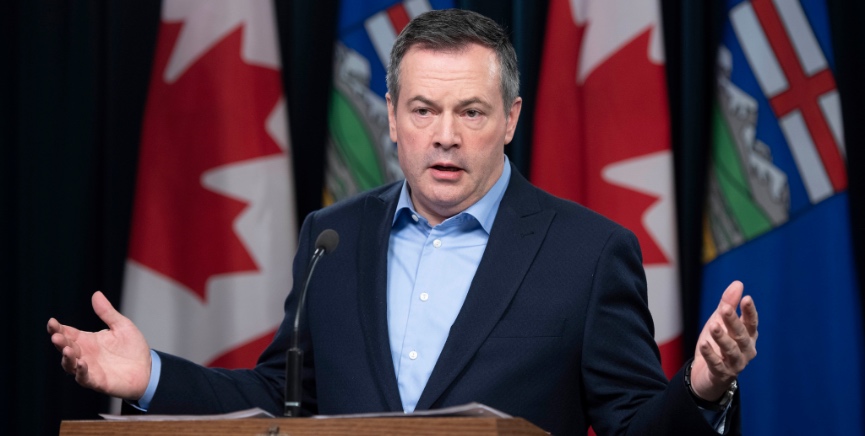Another day, another Alberta government talking point exposed as codswallop.
Yesterday, we compared and contrasted what the United Conservative Party government used to say about the former NDP government’s carbon tax with reality. Viz., it was destroying the economy (UCP), versus, it effectively had no negative impact on the Alberta economy (the government’s own officials).
Today, let’s take a peek at Bill C-69, the Impact Assessment Act, which Alberta Premier Jason Kenney and other members of his government have repeatedly called “the No-More Pipelines Bill.”
As in the case of the ginned-up brouhaha over the Notley government’s painless but poorly sold carbon levy, Kenney’s overheated rhetoric about the federal Liberals’ environmental assessment bill that was finally passed by the Senate last spring and thereafter was constantly assailed in the lead-up to the federal election in October turns out also to have been vastly exaggerated.
Leastways, a short paper published yesterday by University of Calgary School of Public Policy research associate Victoria Goodday, who studies legal frameworks for natural resources management, took a look at C-69 and found much ado about nothing.
In her paper — Demystifying Bill C-69: The Project List — Goodday asked: “Is the backlash over the IAA justified?” Her conclusion. Nope, it isn’t.
Comparing the list of project types that must be reviewed for environmental impact under the IAA with that of the previous legislation, the Harper-government-era Canadian Environmental Assessment Act 2012, Goodday found changes, but not all that much change.
That is to say, the details changed, but the impact doesn’t seem to be all that different.
“Specific to petroleum-based energy projects (oil, gas and coal), 50 per cent of projects under this activity type (14) remained unchanged from CEAA,” she noted.
“Of the project descriptions changed, five became less stringent … and six became more stringent through broadened scope,” she said.
Readers will get the idea. Her key finding, relative to Kenney’s political rhetoric, was this: “The IAA list is arguably more lenient than CEAA on oil and gas pipeline proponents.” (Emphasis added.)
“Of the four oil and gas pipeline entries, the impact is split: one removed, one less stringent, one more stringent and one new,” she also noted. If you’re interested in the nitty-gritty, you should read the paper yourself. It’s short, and reasonably accessible to a layperson.
Here’s her conclusion, which is important when we consider the sorry state of political discourse in this province: “Based solely on a comparison of projects that will automatically require federal review, it is not likely that the IAA will be a disabler of major infrastructure projects, especially oil and gas pipeline infrastructure, as compared to the outgoing CEAA.”
From this, it’s reasonable to conclude that all the sound and fury about Bill C-69 was a way to attack Prime Minister Justin Trudeau and had very little to do with any change in the complexity or difficulty of getting pipelines approved.
Embarrassingly factual stuff like this is not likely to be the topic of a softball feature story by the Kenney government “war room” website — whose mission managing director Tom Olsen recently accurately described, presumably in an unintended slip of the tongue, as “disproving true facts.” Thankfully the paper is probably also too technical to inspire a news release attacking the author and setting out the Kenney government’s alternative facts.
Speaking of which, I wonder how Canadian Energy Centre Ltd.’s fact warriors are getting along with their effort to straighten out the Medicine Hat News?
They talk a very good game. Perhaps later today we’ll get to see what kind of a game the $30-million-a-year war room actually plays. What do you want to bet it’s not a very good one?
David Climenhaga, author of the Alberta Diary blog, is a journalist, author, journalism teacher, poet and trade union communicator who has worked in senior writing and editing positions at The Globe and Mail and the Calgary Herald. This post also appears on David Climenhaga’s blog, AlbertaPolitics.ca.
Image: Government of Alberta/Flickr




